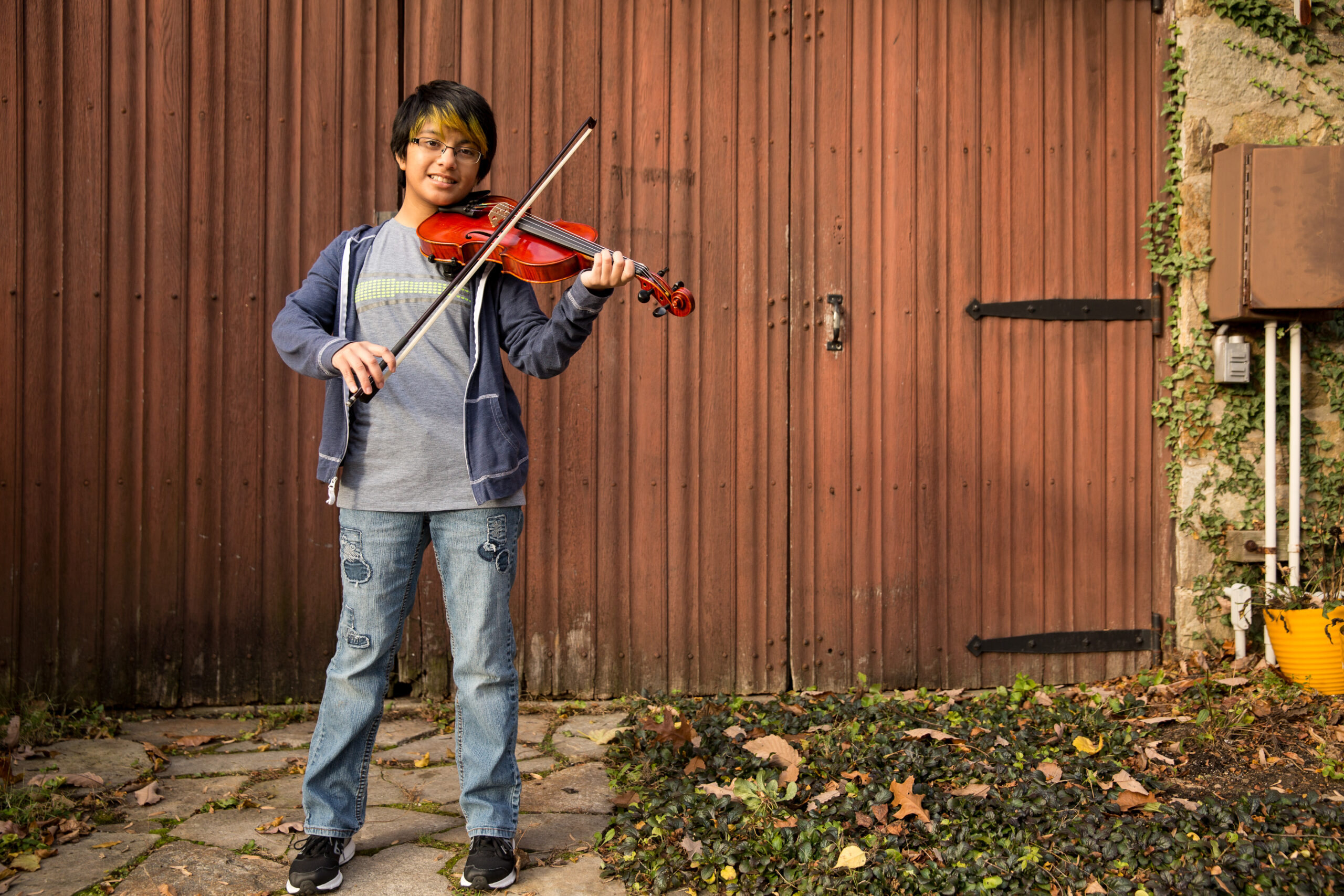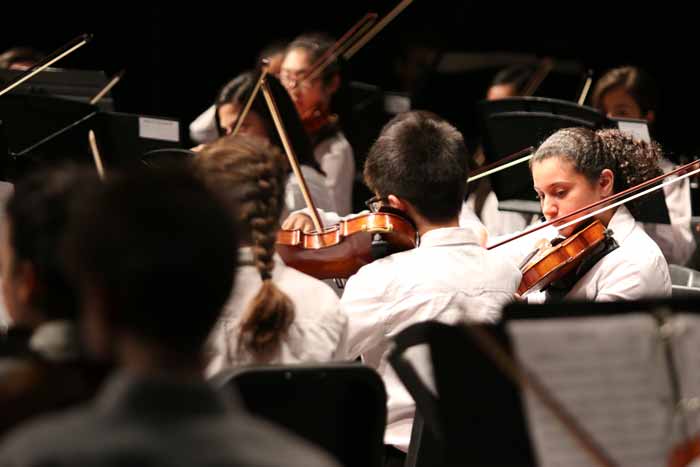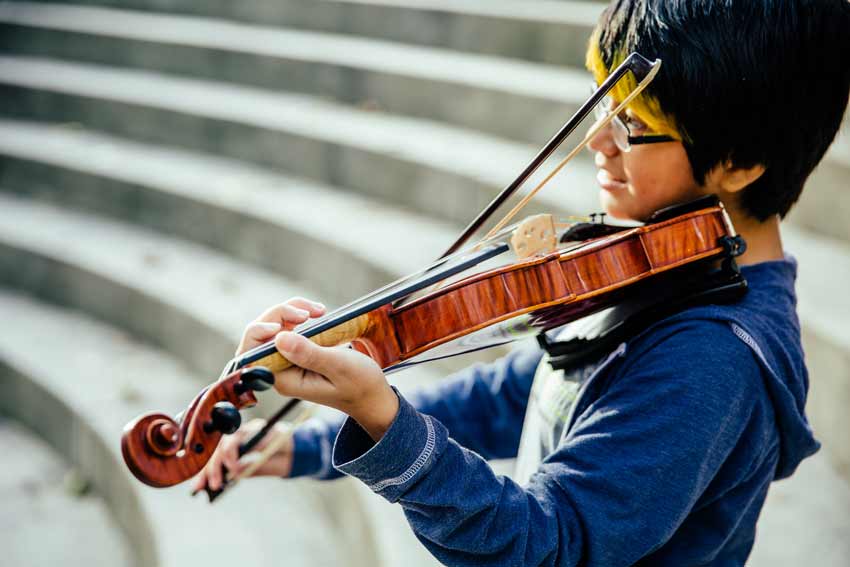August 01, 2015
Cases, Mutes, and Other Essential Viola Accessories


If your child is interested in playing the viola, there are some important accessories you should purchase before you even think about signing them up for lessons. Not only can these accessories make their playing better and their practicing easier, but they will help make their overall experience more enjoyable. Provided your child doesn’t lose or damage them along the way, many of the accessories on this list should last for a good amount of time. From rosin to a shoulder rest, here’s a list of essential accessories your child will need in order to play the viola happily and successfully.
Mutes
If you aren’t familiar with mutes, they’re small gadgets that clip onto the bridge to prevent the vibration of strings, creating a much softer sound. They’re typically manufactured out of plastic, wood, or metal and, in some cases, are made from leather. If your child is part of an orchestra, a mute that fits between the strings and can be pulled back and kept on the viola is ideal, as this type of mute can be taken on and off the viola quickly. If you’re renting a viola, avoid using a cheap, black plastic mute, as they can sometimes leave black marks, especially on light-colored bridges. Different mutes can provide different levels of effect, so consult with your child’s music teacher before investing in a viola mute.
Rosin
Without rosin, your child’s bow won’t work. This form of tree sap helps create friction between the bow and string which, in turn, causes vibrations. There are a lot of different rosins available on the market, ranging in value from under a dollar to $30+. The differences in price relate to the quality of the rosin, including the extras mixed in. Some rosins contain precious metals that create richer tones from the viola; however, upgrading to a different kind of rosin should be avoided unless you re-hair your bow, as the residue from the less expensive rosin will mix with the upgraded rosin, causing little tonal difference. Dark rosin is stickier than light rosin, making it a great choice for those in arid environments. To help make the choice easier, some string manufacturers make rosins that are designed to match their strings.
Shoulder Rest
Although some strongly reject the need for a shoulder rest, most everyone has an easier time with a shoulder rest, especially when first starting out. From using nothing at all to using custom-made rests, shoulder rests are probably one of the most debated subjects between violaists. Some prefer using a sponge, while others enjoy the neck support of a custom shoulder rest made by a specialist. When it comes to choosing a shoulder rest for your child, it’s best to have him or her try out a few different types before settling on a particular one. As far as price goes, this varies greatly. A simple cloth or sponge can cost a few dollars, while high-end rests can exceed $70. If you’re unsure about which option would best suit your child, speak with their teacher or the manager at your local music store for more information.


Music Stand
Unless your child has a photographic memory, you’ll need to invest in a high-quality music stand. If the music stand will be used predominantly at home, a heavy, solid music stand is the best choice, as it can support the weight of a lot of music and, if your child prefers to practice near an open door or window, the wind won’t blow away their music. If you plan on transporting the music stand to and from lessons or a secondary household, a lightweight, folding metal stand is the better choice, as they’re easy to carry and collapse so you can fit them into a small bag. If you need something in the middle, there are plenty of sturdy, yet transportable, options available.


Sturdy Case & a Metronome
While hard viola cases can be expensive, they’ll do a better job at protecting your child’s viola than a softer gig bag. If your child is extremely cautious and/or won’t be transporting their viola very often, they may be able to get away with using a soft case for a little while, but most experts would recommend purchasing a hard case eventually as they provide the optimum level of protection. When shopping for a viola case, keep an eye out for sturdy latches and storage space for any accessories. A high-quality case can be expensive, but the initial investment is far less expensive than fixing or replacing a viola.
Your child may not need a metronome right away, but it will become absolutely imperative to their progress once they sign up for lessons and begin preparing for performances. If you purchase a metronome with a built-in tuner, then you’ll have a device that will help your child play at the right tempo and at the right pitch.


Chin Rests
While a chin rest affects the player’s comfort and relationship with the instrument considerably, it’s also one of the more basic elements to take on and off. By simply using a chin rest tool to unscrew the the chin rest on the side of the viola, you can screw an alternative chin rest on. Just be careful not to scrape the side of the viola, and make sure there’s some kind of support that will prevent the clamp from scratching the surface of the viola. As with shoulder rests and rosin, there are a variety of chin rests available on the market. Some are small and straight, and others are big and cupped. If your child has trouble with normal chin rests, there are gel chin rests available. As with the other items on the list, finding the right chin rest has to do with personal preference, so have your child try out a few different types of chin rests before making a final decision.
If you haven’t purchased your viola yet, check out our Viola Buyer’s Guide.





